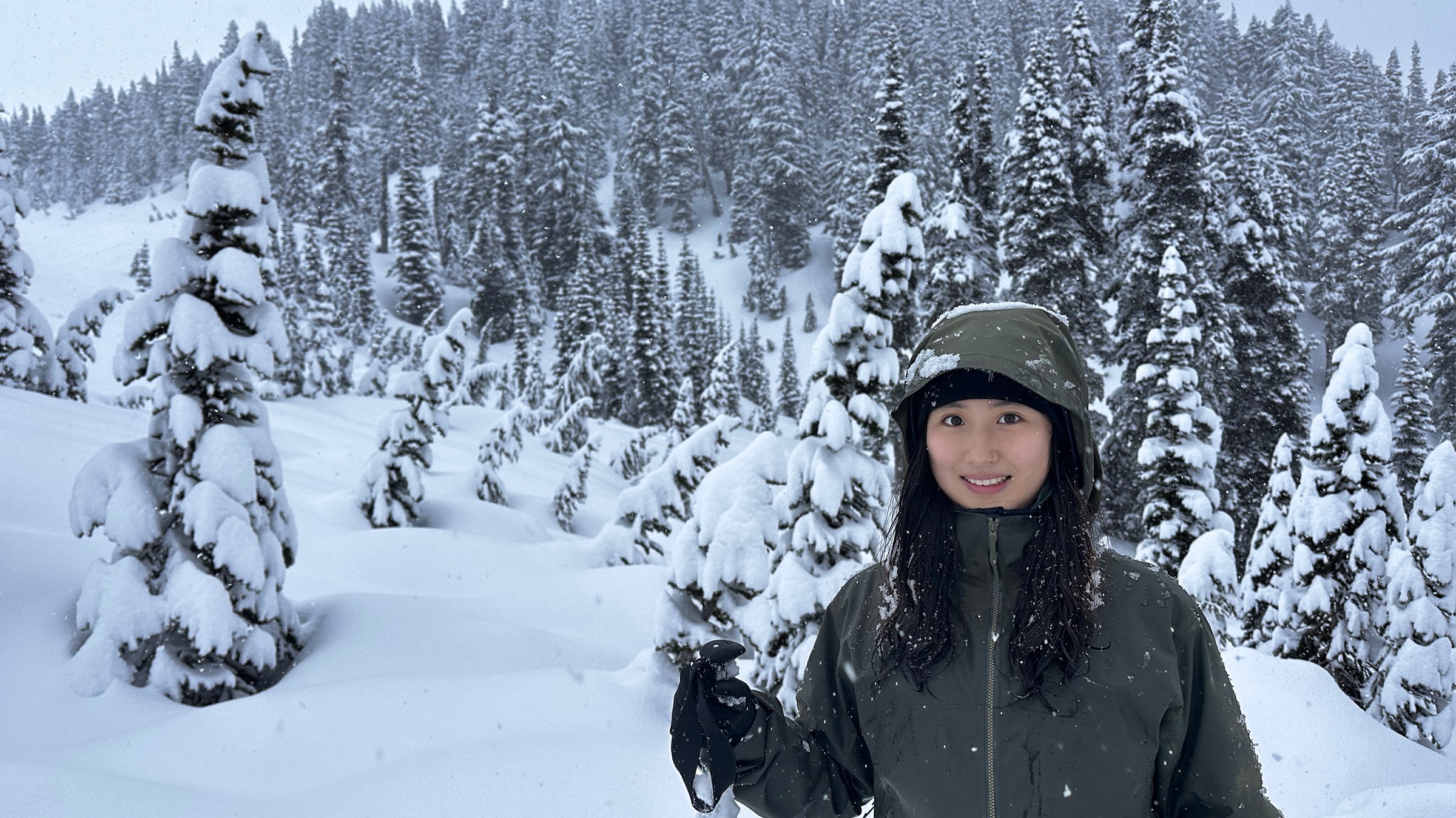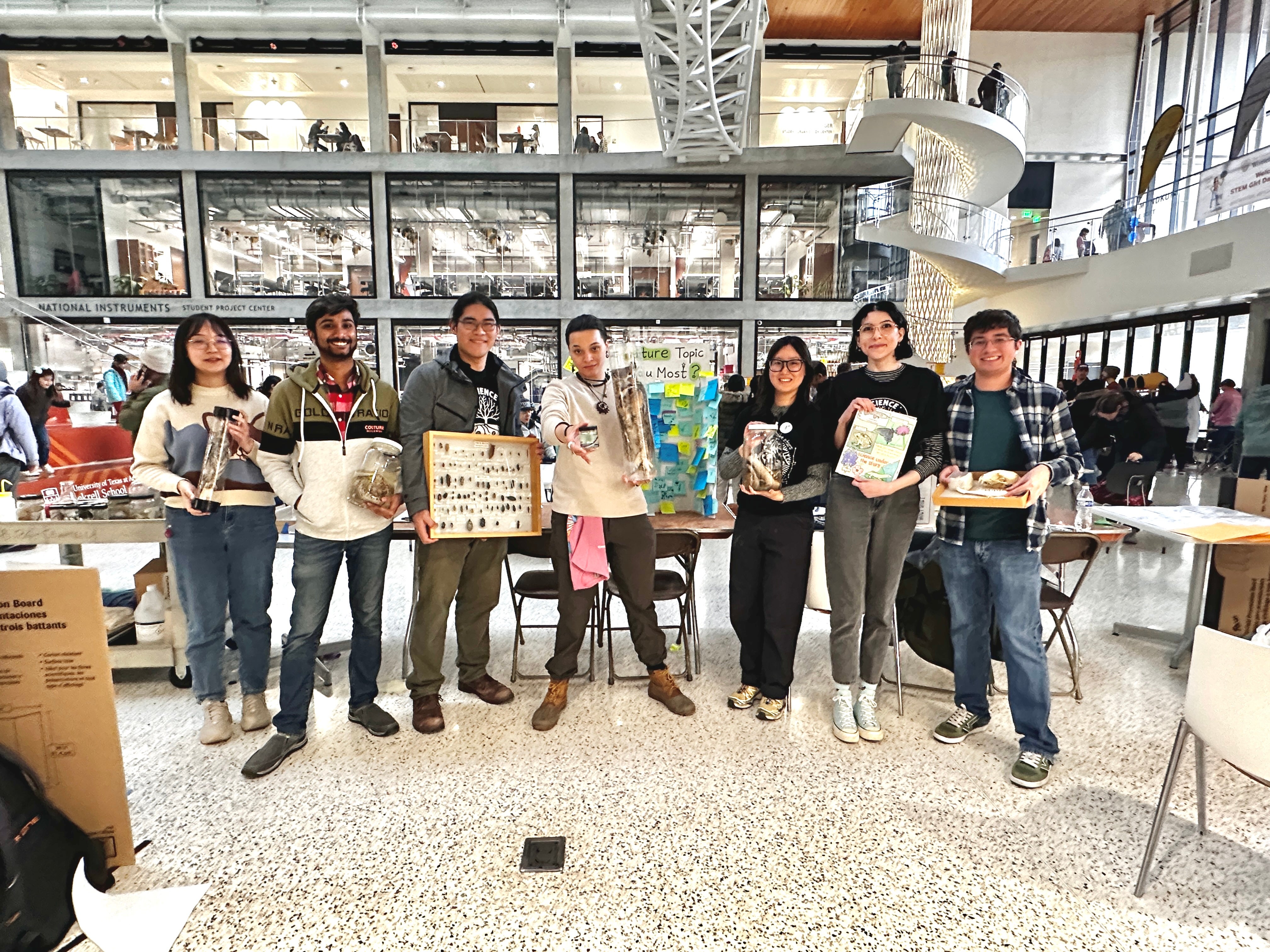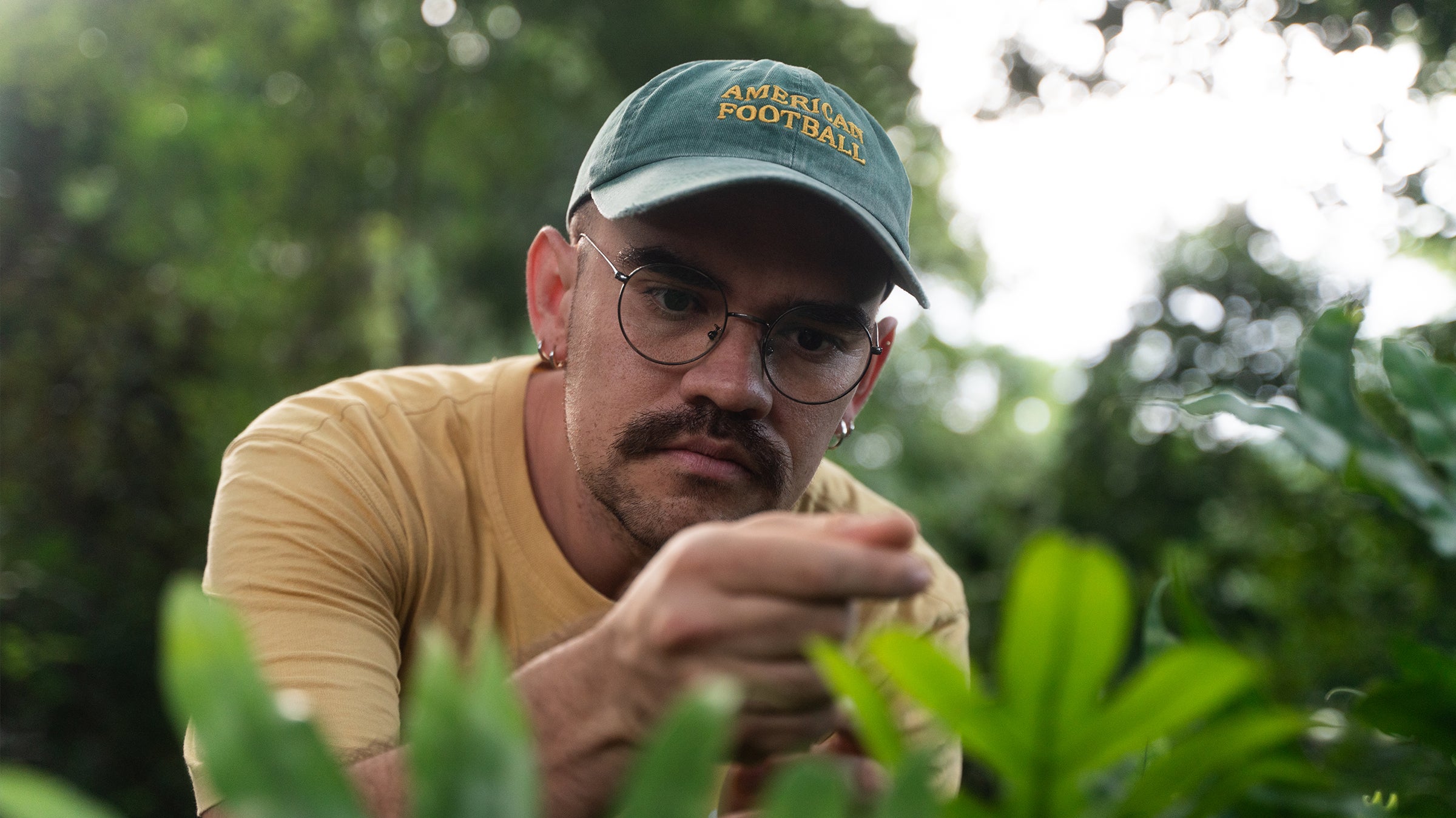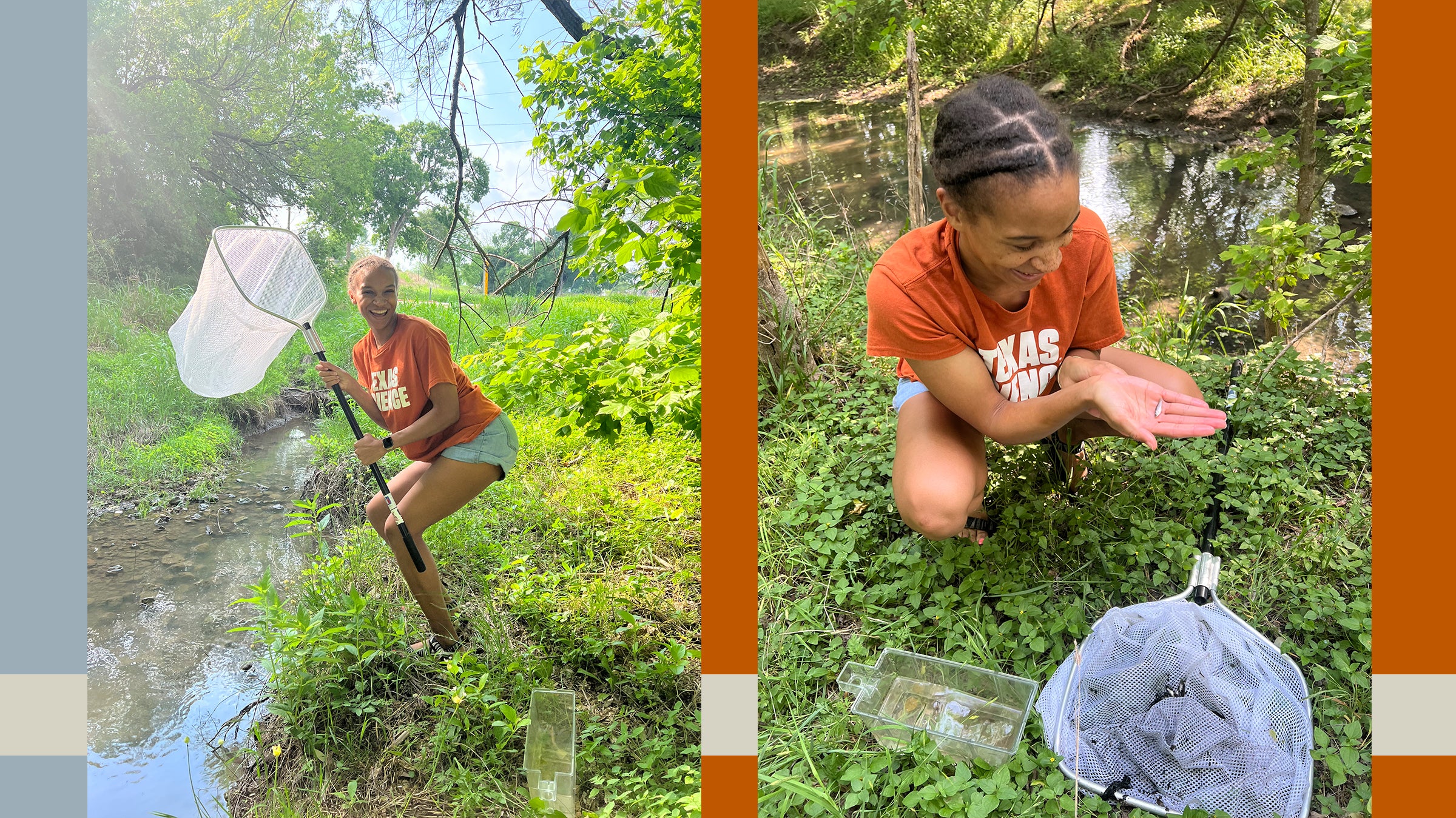
Tianyi on Mt. Rainier in Washington state.
Before coming to UT, I completed my Bachelor’s degree in Biology and Quantitative Sciences at Emory University in Atlanta, Georgia. For my undergraduate thesis, I worked on projects related to gut microbiome and diet preferences of bean beetles. However, I have always been fascinated by paleobiology and wanted to study fossils to understand how biodiversity changes through time. I was thrilled to join Dr. Melissa Kemp’s lab at UT, where I could explore how fossil records can inform modern conservation efforts by providing long-term biodiversity baselines. Although my current research on Quaternary reptile diversity is vastly different from my undergraduate work, I find that the same core skill sets, such as critical thinking, experimental design, and data analysis, are essential. My undergraduate background in general biology therefore has given me a foundation for tackling interdisciplinary questions in paleobiology.
You study reptile diversity using a wide variety of tools like evolutionary biology. Can you explain what this means and how you got interested in this?
I study how reptile biodiversity is shaped by and responds to global changes such as climate shifts and human impacts, integrating tools from paleobiology, ecology, evolutionary biology, and biogeography. Like many biologists, I was drawn to the fields of ecology and evolution through my love for nature and animals. Reptiles, in particular, have always fascinated me. They display incredible phenotypic and functional diversity, from small, agile anoles to massive, long-lived tortoises, each playing unique ecological roles. Currently, I use morphometrics, genetic, and ecological modeling approaches to study Jamaican lizards and North American Gopherus tortoises in the Pleistocene, focusing on how these communities have shifted in taxonomic composition, functional diversity, and geographic range over time.

The Science Under the Stars team at the annual UT STEM Girl Day, February 2025.
Does Texas present a unique situation, challenge or benefit for your research?
Texas offers incredible resources and opportunities for biodiversity and paleobiological research. At UT Austin, I have access to exceptional natural history collections, field stations, and state-of-the-art research facilities such as the UT High-Resolution X-ray CT Facility (UTCT) and the Genomic Sequencing and Analysis Facility (GSAF), which supports my morphological and genetic research. My advisor, Dr. Kemp, also leads an ancient DNA lab capable of processing fossil material. Additionally, UT Vertebrate Paleontology Laboratory (VPL) has been invaluable for my work on Gopherus tortoise fossils from Texas. Collected by UT paleontologists, these unique fossils represent a lineage of Gopherus tortoise that may differ from any living species and provide insights into the evolutionary history and conservation management of the group. Beyond facilities, the Department of Integrative Biology and the College of Natural Sciences have provided unparalleled research support through funding and mentorship. Being at UT has allowed me to grow as a scientist in ways that would not have been possible elsewhere.
How will being a Stengl-Wyer Fellow help advance your work?
Being a Stengl-Wyer Fellow has provided me with dedicated time and resources to focus on my research, which involves time-intensive fieldwork, fossil processing, and genetic analyses. The fellowship also connects me with a vibrant interdisciplinary community of researchers, including Stengl-Wyer Scholars and other Fellows, which has expanded my perspectives on biodiversity research. Even just within my first two months in the program, I have participated in several cohort activities, including visiting the Marine Science Institute and the herbarium, and attending our monthly luncheons where we discuss research updates, professional development, and upcoming outreach initiatives. This community not only supports my scientific progress but also fosters collaboration and creativity across disciplines.

Tianyi and a tortoise fossil at UT's Vertebrate Paleontology Laboratory.
How do the field stations support your research?
While my dissertation research does not take place at UT’s field stations, I spend a lot of time at the Brackenridge Field Laboratory (BFL) through Science Under The Stars, a public science outreach lecture series that I lead. Organizing and hosting events at BFL has allowed me to engage directly with the public, coordinate speakers who share their research in accessible and engaging ways, and inspire curiosity about the natural world. These experiences have strengthened my science communication skills and deepened my appreciation for UT’s field stations as hubs for both research and science outreach.
Where do you see your research agenda heading after UT?
My broad research interests lie in global change biology and conservation science. After completing my PhD, I hope to continue investigating how biodiversity responds to environmental change, integrating both modern and paleobiological perspectives to inform conservation strategies. Beyond academia, I am also interested in pursuing research in non-profit or applied settings where I can contribute to science-based, data-driven sustainability planning and biodiversity monitoring efforts.
Learn more about all of our 2025 Stengl-Wyer Scholars and Fellows at this blog here.

Conducting paleobiological excavations in Jamaica with the team. (Left to right: Elizabeth Austin, Tianyi Xu, Megan O'Quin, Ally Boville, Dr. Melissa Kemp)



